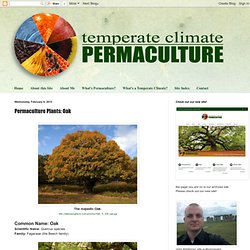

Ode to Fir. Situational Awareness for Emergency, Disaster and Survival May 26, 2012, by Ken Jorgustin Guest post: by Giurza I do believe that this simple tree has not been given its due beyond what we think of it in terms of X-mas tree. During all three survival courses in Sweden (two summer time and one winter time) I was given excellent opportunity to fully appreciate the fir tree. What follows is a short laudatory article for its numerous gifts for survivalists and layman alike.
First , the fir tree provides excellent C vitamin rich material. Pluck green needles and cook them in water for 5 min. Second , branches of fir tree provide EXCELLENT thermal and visual camouflage (visual only in appropriate terrain). Third , as mentioned above, fir branches are famous for their thermoisolative qualities, thus we use them for outdoor temporary shelters.
Then do the roof and walls. Fourth , fir roots, young ones are very good as ropes. Fifth , fir bark and cones are very good for bark tanning the furs. Ohio Trees - Pin Oak. Pin Oak, an Oak distributed from the middle Atlantic states westward to the edge of the Great Plains, and encompassing most of the Midwest, is often seen in the wild in wet areas (an alternative common name is Swamp Oak).

In floodplains, wetlands, and low areas, Pin Oak may form nearly pure stands, and is distinctive in its dense growth habit: ascending upper branches, horizontal middle branches, and strongly downswept lower branches. In urban areas, Pin Oak suffers from a quirk of commercial nursery production, in that most trees originate from southern sources with very acidic soils, and when transplanted to neutral or alkaline soils, suffer tremendously from leaf chlorosis with a resulting loss of vigor.
The lesson still not learned is to use local seed sources for growing trees, when there will be a problem of any type. Pin Oak gets its common name from the practice long ago of "pinning together" the timbers of a barn with the tough, resilient branchlets of this tree. Permaculture Plants: Oak. The majestic Oak.

Common Name: OakScientific Name: Quercus speciesFamily: Fagaceae (the Beech family) Ariundle Oakwood, Scotland. One of the last surviving old-growth oak forests in the Scottish Highlands. Angel Oak Tree, outside of Charleston, South Carolina, is over 1,500 years old. Live Oak (Quercus virginiana) Description: The Oaks are a large family of shrubs and trees, about 600 species, which produce acorns. English or Pedunculate Oak (Quercus robur) Watercolor by Ruth de Monchaux History: Native to the northern hemisphere, oaks are found from tropical to cold climates. Trivia: Oak trees can be deciduous or evergreen (a.k.a. Trees & Leaves Photo Guide. Black Walnut. How to Eat a Pine Tree.
This post is a follow-up to the The Fantastic Four – 4 Essential Wild Edible Plants that May Just Save Your Life article.

In it I demonstrate how to process and eat one of the core four essential survival plants: Pine. When you look at your average pine tree, rarely does one think that it has the ability to sustain you in a survival situation if the need ever arose. It’s sharp needles and gnarly bark give off the impression that it’s a less-than-friendly flora. On the contrary, pine provides some of the most readily available food sources in nature. Pine Nuts All pines contain edible seeds in the late season cones. As someone who lives in the Northeast, species of pine available here do not offer up seeds big enough to warrant the effort required in gathering and processing them. Gathering and Processing Pine Nuts The best time to gather pine nuts is in September and October. Notice the seeds w/in the cones Pine Needle Tea Male Pine Cone Flour Edible Pine Bark You can eat bark? Boiling Frying. The Fantastic Four – 4 Essential Wild Edible Plants that May Just Save Your Life.
Did you realize that knowing just 4 wild edible plants could one day save your life?

If there were any four categories of plants that I would recommend all people to know how to use and identify it would be these: Grass, Oak, Pine, and Cattail. For the knowledgeable survivor, knowing just these four plants can make the difference between life and death if stranded in the wilds – for each one is an excellent food source which can sustain you until help arrives. Throughout this week and part of the next, I’ll be going into details on how you can prepare and eat these plants. For now though, here’s a quick overview into what they have to offer: Grass Surprising to many is the fact that you can eat grass.
The young shoots up to 6 inches tall can be eaten raw and the starchy base (usually white and at the bottom when you pluck it) can be eaten as a trail nibble. Oak Oak – specifically the acorn – is a great source of food in the fall and early winter time. Survival Topics. Birch bark. Waterproofing A Cracked Wooden Bowl With Pine Rosin. Pine Resin & Pine Needle Tea: BloodFeatherBushcraft.